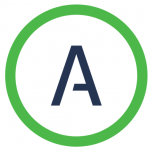
Avance Gas Holding Ltd
OSE:AGAS


| US |

|
Johnson & Johnson
NYSE:JNJ
|
Pharmaceuticals
|
| US |

|
Berkshire Hathaway Inc
NYSE:BRK.A
|
Financial Services
|
| US |

|
Bank of America Corp
NYSE:BAC
|
Banking
|
| US |

|
Mastercard Inc
NYSE:MA
|
Technology
|
| US |

|
UnitedHealth Group Inc
NYSE:UNH
|
Health Care
|
| US |

|
Exxon Mobil Corp
NYSE:XOM
|
Energy
|
| US |

|
Pfizer Inc
NYSE:PFE
|
Pharmaceuticals
|
| US |

|
Palantir Technologies Inc
NYSE:PLTR
|
Technology
|
| US |

|
Nike Inc
NYSE:NKE
|
Textiles, Apparel & Luxury Goods
|
| US |

|
Visa Inc
NYSE:V
|
Technology
|
| CN |

|
Alibaba Group Holding Ltd
NYSE:BABA
|
Retail
|
| US |

|
3M Co
NYSE:MMM
|
Industrial Conglomerates
|
| US |

|
JPMorgan Chase & Co
NYSE:JPM
|
Banking
|
| US |

|
Coca-Cola Co
NYSE:KO
|
Beverages
|
| US |

|
Walmart Inc
NYSE:WMT
|
Retail
|
| US |

|
Verizon Communications Inc
NYSE:VZ
|
Telecommunication
|
Utilize notes to systematically review your investment decisions. By reflecting on past outcomes, you can discern effective strategies and identify those that underperformed. This continuous feedback loop enables you to adapt and refine your approach, optimizing for future success.
Each note serves as a learning point, offering insights into your decision-making processes. Over time, you'll accumulate a personalized database of knowledge, enhancing your ability to make informed decisions quickly and effectively.
With a comprehensive record of your investment history at your fingertips, you can compare current opportunities against past experiences. This not only bolsters your confidence but also ensures that each decision is grounded in a well-documented rationale.
Do you really want to delete this note?
This action cannot be undone.

| 52 Week Range |
72.4
198
|
| Price Target |
|
We'll email you a reminder when the closing price reaches NOK.
Choose the stock you wish to monitor with a price alert.

|
Johnson & Johnson
NYSE:JNJ
|
US |

|
Berkshire Hathaway Inc
NYSE:BRK.A
|
US |

|
Bank of America Corp
NYSE:BAC
|
US |

|
Mastercard Inc
NYSE:MA
|
US |

|
UnitedHealth Group Inc
NYSE:UNH
|
US |

|
Exxon Mobil Corp
NYSE:XOM
|
US |

|
Pfizer Inc
NYSE:PFE
|
US |

|
Palantir Technologies Inc
NYSE:PLTR
|
US |

|
Nike Inc
NYSE:NKE
|
US |

|
Visa Inc
NYSE:V
|
US |

|
Alibaba Group Holding Ltd
NYSE:BABA
|
CN |

|
3M Co
NYSE:MMM
|
US |

|
JPMorgan Chase & Co
NYSE:JPM
|
US |

|
Coca-Cola Co
NYSE:KO
|
US |

|
Walmart Inc
NYSE:WMT
|
US |

|
Verizon Communications Inc
NYSE:VZ
|
US |
This alert will be permanently deleted.
 Avance Gas Holding Ltd
Avance Gas Holding Ltd
Avance Gas Holding Ltd
Avance Gas Holding Ltd. engages in the operation and transportation of liquefied petroleum gas. The firm is an owner and operator of very large gas carriers (VLGCs). Avance Gas provides LPG transportation services to destinations in Europe, South America, India and Asia, mainly loading the Middle East Gulf and the United States Gulf/United States East Coast. The company provides customers with transportation services through a combination of contract and spot market voyages. The firm's fleet consists of approximately 13 VLGCs and four dual fuel new buildings. The firm's fleet of vessels includes Iris Glory, Venus Glory, Promise, Mistral (scrubber), Monsoon, Breeze, Passat, Sirocco, Levant, Chinook and Pampero.

Avance Gas Holding Ltd. engages in the operation and transportation of liquefied petroleum gas. The firm is an owner and operator of very large gas carriers (VLGCs). Avance Gas provides LPG transportation services to destinations in Europe, South America, India and Asia, mainly loading the Middle East Gulf and the United States Gulf/United States East Coast. The company provides customers with transportation services through a combination of contract and spot market voyages. The firm's fleet consists of approximately 13 VLGCs and four dual fuel new buildings. The firm's fleet of vessels includes Iris Glory, Venus Glory, Promise, Mistral (scrubber), Monsoon, Breeze, Passat, Sirocco, Levant, Chinook and Pampero.





























 You don't have any saved screeners yet
You don't have any saved screeners yet
